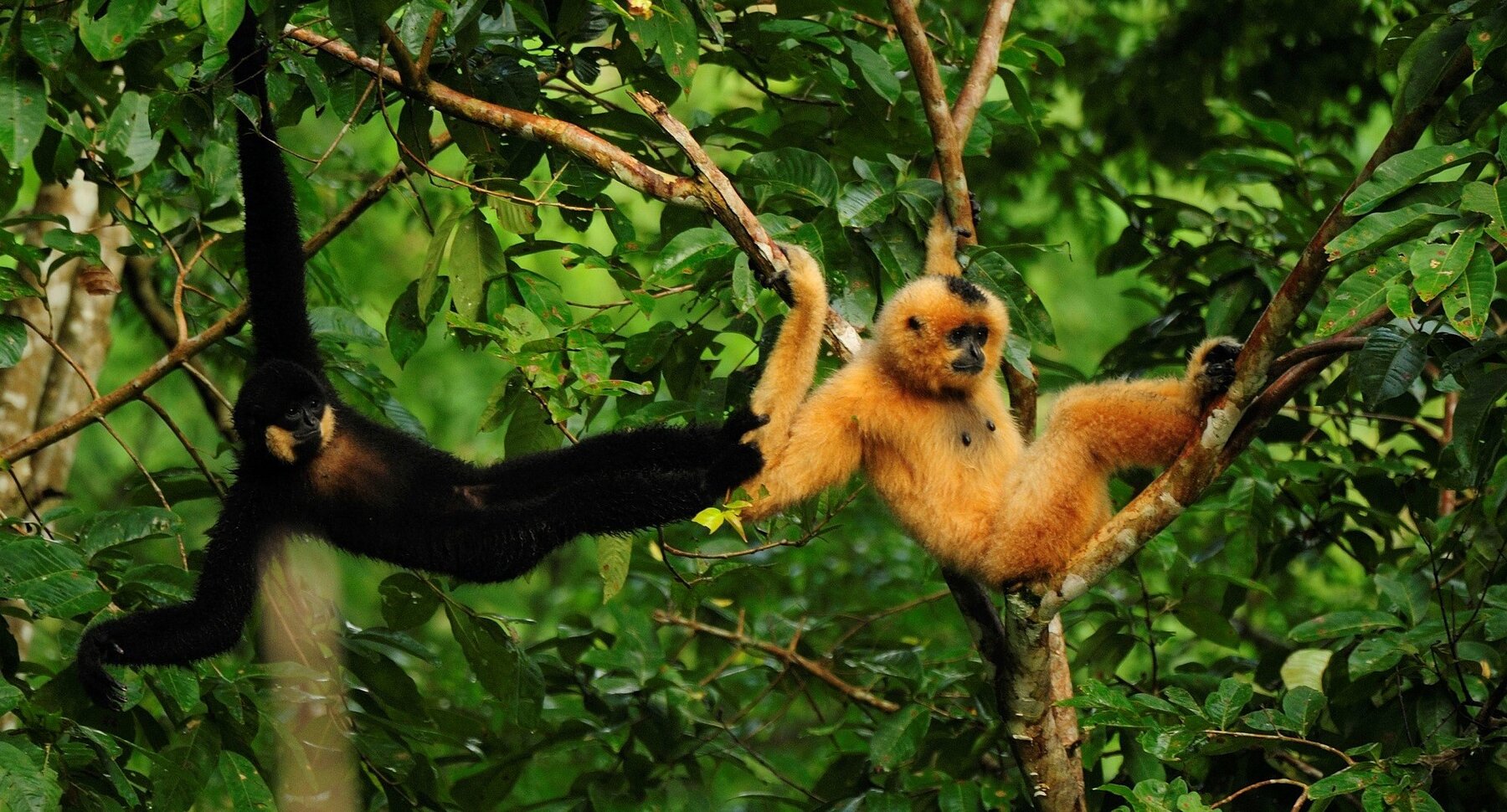
Northern yellow-cheeked crested gibbon
Zoo and Tierpark Berlin are working to protect the northern yellow-cheeked crested gibbon in Vietnam.
Project facts
- Project partners
Frankfurt Zoological Society and Stiftung Artenschutzz
- Species
Northern yellow-cheeked crested gibbon (Nomacsus annamensis)
- IUCN threatened status
Endangered (EN)
- Project location
Kon Ka Kinh National Park and Kon Cha Rang Nature Reserve, Vietnam
- Greatest threat
Habitat loss and poaching
- Response
Protecting wildpopulations and natural habitats, educating local people
Threat Categories of IUCN


The smallest apes
Gibbons are the smallest type of ape. They have lived at Zoo Berlin since 1900, and the Tierpark has kept them since 1962. In the wild, gibbons can only be found in the forests of Southeast Asia, where they live as couples or in small family groups. They mate for life. Unlike other apes, gibbons mark their territory by singing. An early morning gibbon duet can easily be heard a kilometre away. These agile climbers are also record-breakers when it comes to moving quickly through the trees. They can jump as far as 15 metres and reach speeds of up to 55 kmph.
At home in a biodiversity hotspot
Kon Ka Kinh National Park and Kon Chu Rang Nature Reserve in central Vietnam are home to the endangered northern yellow-cheeked crested gibbon, which owes its name to the yellow face markings of the otherwise all-black males. The densely wooded national park and nature reserve are made up of different forest types and crossed by major watercourses. These conditions ensure that the forests are teeming with life. Alongside the yellow-cheeked crested gibbon, at least 40 other mammal species, 160 bird species and 51 reptile species benefit from the protection this sanctuary offers.
Protected but still in danger
Although these gibbons are officially protected by law, their numbers continue to plummet. Poaching and the loss of suitable habitat are having a devastating impact on the remaining population. The small apes are primarily hunted for the pet trade as well as for their meat. It is estimated that only approximately 180 gibbons live in central Vietnam – and that number seems set to fall further. Poachers scour the forest for days at a time on their search for wild animals. They camp out overnight, which enables them to penetrate deep into the forest. Although these gibbons are difficult to spot, their distinctive morning song, clearly audible from a distance, makes it easy for poachers to track them down and ultimately catch or kill them.
The power of song
Conversely, the gibbons’ song is also coming to their aid. Conservationists at the Frankfurt Zoological Society are using it to research the apes’ distribution and population numbers. Each gibbon has its own individual call and can thus be specifically identified. Researchers sit at 36 “listening posts” spread throughout the forest, noting down details of the gibbon song as it rises and falls. Zoo and Tierpark Berlin are supporting this important monitoring work. In the future, audio equipment will be installed on the listening stations to record the gibbon song. These recordings will give researchers a more accurate picture of the composition of the local population and help them reliably identify individuals. Armed with this knowledge, they will be able to plan and implement additional protective measures.
Photos on site: © Nguyen Van Truong


